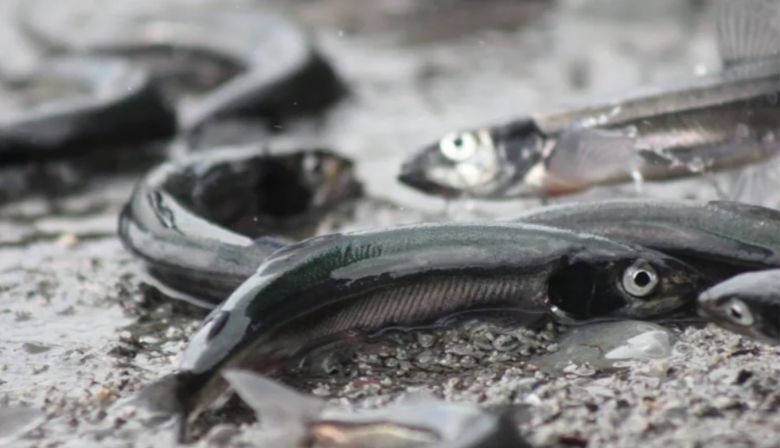
Subscribe & stay up-to-date with ASF


The latest assessment of capelin stocks in the waters off Newfoundland and Labrador paints a grim picture of the health of the tiny forage fish, intensifying the debate over whether a commercial harvest should continue.
In a briefing with reporters on Wednesday, scientists with the Department of Fisheries and Oceans revealed that capelin stocks in the 2J3KL fishing region remain at roughly six per cent of the levels they were in the early 1990s, and the future looks even more dire.
“We suspect the biomass in 2021 will be same as 2020, and 2020 was a bad year,” said DFO biologist Fran Mowbray.
The assessment has conservation groups saying it’s time for a moratorium on capelin, and that scientific efforts need to be increased to get a better picture of the spawning stock biomass.
“The evidence is actually strong that taking this action is the best one if we want a chance at improving our fisheries’ prospects in the long term,” said Victoria Neville, a St. John’s-based scientist with World Wildlife Fund-Canada.
Advocates for the fishing industry were quick to raise their voices Wednesday in support of continuing a limited harvest, arguing that the historically low quota represents just 0.1 per cent of capelin mortalities.
Keith Sullivan, president of the Fish, Food & Allied Workers’ union, said a closure would put a financial squeeze on thousands of people who depend on the fishery, and predation by a growing seal population is a much bigger threat
“We need more focus, and really that has to be a way where we got to remove more and more seals. That population is about as high as it’s ever been now and it’s doing a number on a lot of fish species,” said Sullivan.
Neville said everything from whales and puffins to gannets and northern cod rely on capelin for their nutritional needs, “so leaving these fish in the water is actually an investment in the production for other predator species that rely on it.”
‘Prospects remain poor’
Research by DFO has found that larvae production has been poor for the past seven years, that capelin are more likely to spawn in mid-July as opposed to mid-June, which affects mortality rates and the health of survivors, and that capelin older than two years have all but disappeared.
“This is very concerning to us,” said Mowbray.
DFO does not have an accurate estimate of the spawning stock biomass of capelin, and relies on research from biological samples, limited bottom trawl and acoustic surveys, and other data to determine the health of the stock.
Based on all these indicators, “prospects remain poor,” said Mowbray.
DFO does not use catch rates from harvesters in its science because capelin is a targeted fishery in which harvesters lower their nets only when capelin are spotted in the water.
However, harvesters landed 89 per cent — 16,144 tonnes — of the total allowable catch last year in 2J3KL, with DFO acknowledging that predation by fish, seals and other mammals is “large” when compared with the commercial fishery.
Fishing should stay at ‘lowest possible level’
As expected, the assessment reignited the debate over how to manage capelin, with scientists like Mowbray stopping short of recommending an outright closure.
Given the stock’s continued low levels, and the “significant” role played by ecological factors in this decline, Mowbray’s team is recommending that fishing activity “be kept at the lowest possible level.”
The final word on quotas for 2021 rests with Bernadette Jordan, Canada’s minister of fisheries and oceans.
But advocates like Sullivan say a closure is unwarranted, since the level of pressure on the stocks by harvesters is “not that consequential,” but represented some $16 million in earnings last year for harvesters.
“I think stability at very conservative levels is probably what harvesters will want to see,” said Sullivan.
But there’s one thing harvesters and conservationists agree on: DFO has to invest more into research.
Sullivan said some countries hire harvesters to conduct capelin surveys, and DFO should do the same.
But even without this extra science, groups like Oceana Canada say there’s already plenty of evidence to merit a suspension of the capelin fishery.
Forage fish such as capelin form the foundation of healthy ocean ecosystems, said Robert Rangeley, science director of Oceana Canada.
“There continues to be a capelin fishery, while species that depend on them, such as cod, are starving,” Rangeley stated in a news release.
Rangeley said the fisheries minister must make her decision based on science and international best practices.
“That means the fishery should be paused until the stock recovers, reference points are established, and precautionary quotas are set based on capelin’s vital role in the ecosystem.”
Sullivan said harvesters understand that capelin are a vital link in a healthy ecosystem and believe they can be fished sustainably.
“I would think [a moratorium] would be really a knee-jerk reaction to what’s coming from an environmental group that obviously has different concerns than the welfare of the people in Newfoundland and Labrador, and really the fish stocks if we get down to it,” he said.
https://www.cbc.ca/news/canada/newfoundland-labrador/capelin-fishery-collapse-1.5952953